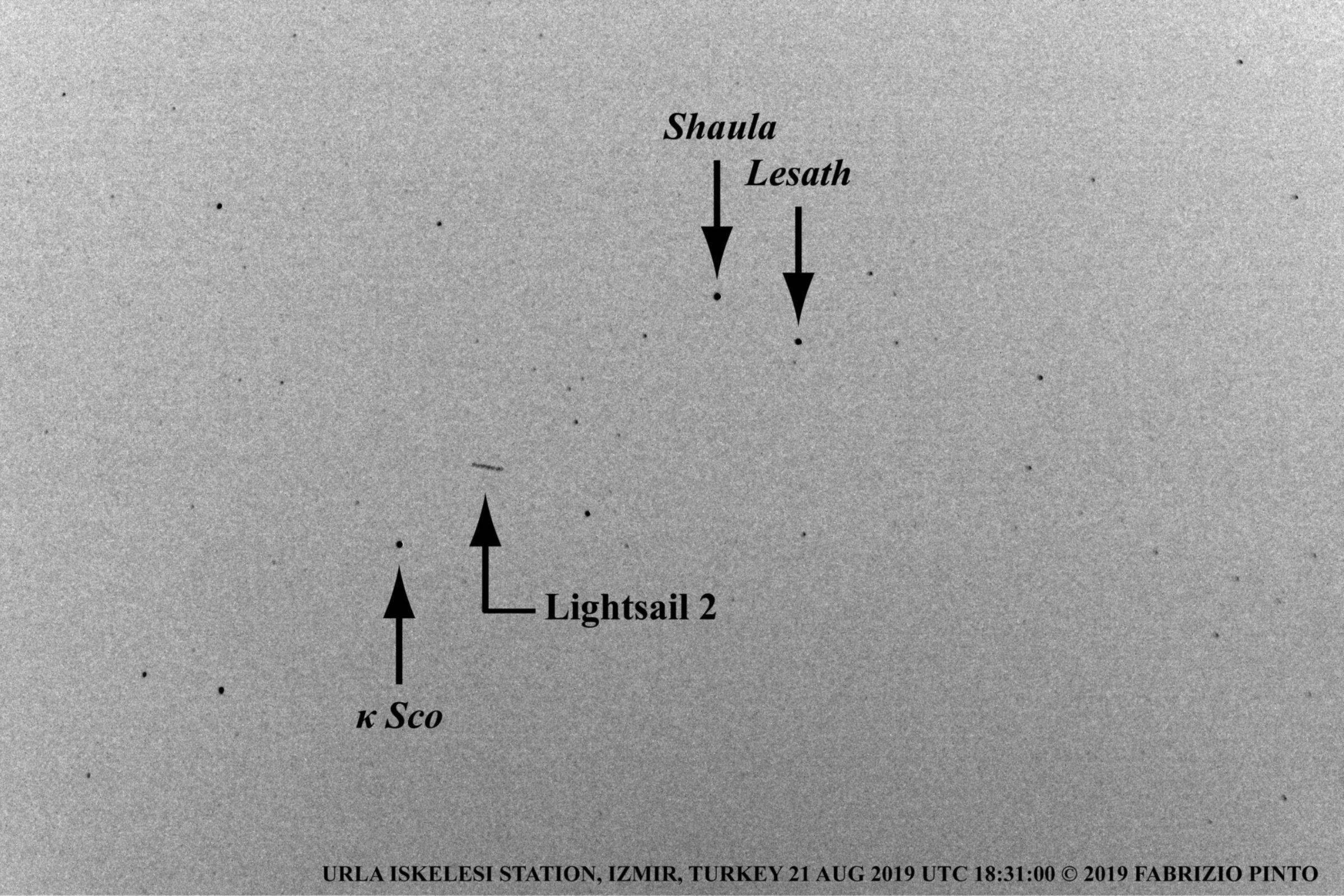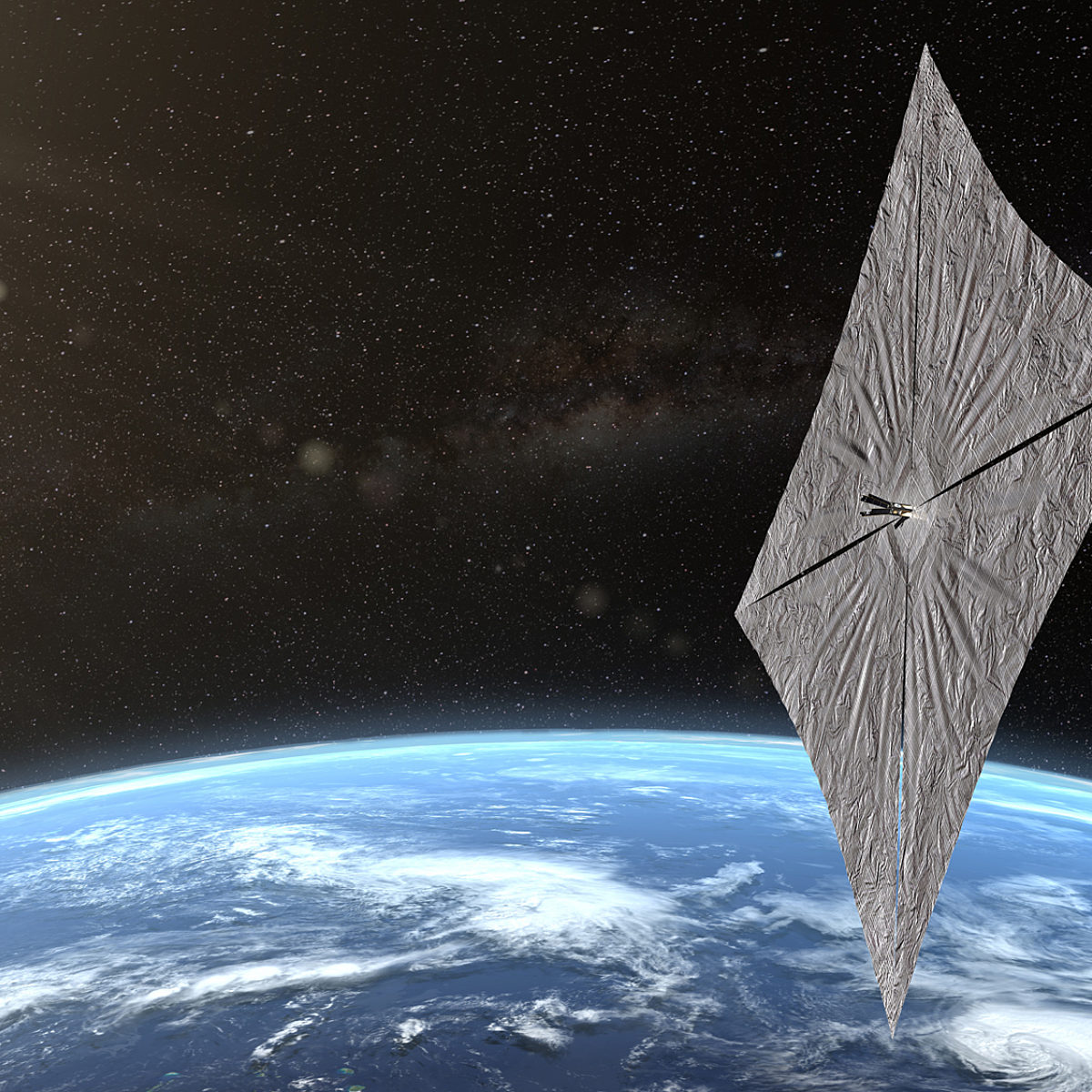Jason Davis • Aug 23, 2019
LightSail 2 Marks 1 Month of Solar Sailing
The Planetary Society's LightSail 2 spacecraft is celebrating 1 month of solar sailing in Earth orbit. Since deploying its aluminized Mylar sail on 23 July 2019, the spacecraft has spent the majority of its time turning towards the Sun each orbit to get a slight push from solar photons. This has raised LightSail 2's apogee, or orbital high point around the Earth, by 7.2 kilometers—all without a drop of conventional fuel.
LightSail, a Planetary Society solar sail spacecraft
LightSail is a citizen-funded project from The Planetary Society to send a small spacecraft, propelled solely by sunlight, to Earth orbit.
Last week we published a guide to spotting LightSail 2 in the night sky. Several people from the United States and 1 person from Syria wrote in to say they've seen the spacecraft. We also received the first image of LightSail 2 from a ground-based camera! The honor goes to Fabrizio Pinto from Izmir, Turkey.

Pinto previously worked at NASA’s Jet Propulsion Laboratory, and now teaches aerospace engineering at the Izmir University of Economics. He writes:
At JPL I did research on, among other things, navigation and flight mechanics of low thrust spacecraft (ion engines) on interplanetary missions, such as Deep Space 1. Therefore I have a natural interest in orbits that evolve under the action of small forces, including solar sails. I also studied solar sails as part of the science definition team of the Interstellar Probe—hopefully your activities will get us there some day!
LightSail 2 has now been communicating with Earth more than twice as long as the LightSail 1 mission lasted from start to finish (25 days). Pre-launch orbital models predict LightSail 2 will remain in orbit roughly a year.
Support our core enterprises
Your support powers our mission to explore worlds, find life, and defend Earth. You make all the difference when you make a gift. Give today!
Donate

 Explore Worlds
Explore Worlds Find Life
Find Life Defend Earth
Defend Earth


